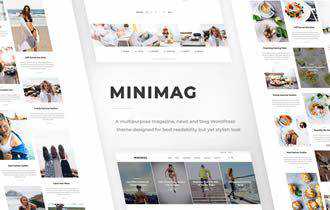The Month in WordPress: February 2020
February 2020 was a busy month in the WordPress project! Most notably, there was an outpouring of sentiment in response to the unfortunate cancellation of WordCamp Asia. However, the team continues to work hard in the hopes of making WordCamp Asia 2021 happen. In addition, there were a number of releases and some exciting new news during the month of February. Read on for more information!
WordCamp Asia 2020 Cancelled & Pop-up Livestream
There was a ton of excitement around WordCamp Asia, not to mention all the effort from organizers, speakers, sponsors and volunteers. Unfortunately, on February 12th, WordCamp Asia was cancelled due to concern and uncertainty around COVID-19. Since then, the organizing team has worked to refund tickets and to support hotel and air refunds. In addition, a pop-up livestream featuring some WordCamp Asia speakers and a Fireside Chat and Q&A with Matt Mullenweg took place on February 22nd.
For a personal take on the cancellation of WordCamp Asia, read this post from Naoko Takano, the global lead organizer. Many thanks to the volunteers who worked hard to deliver WordCamp Asia. They’ve not only handled logistics associated with cancellation but have also announced that they’ve started working on WordCamp Asia 2021 with some January dates in mind! To get the latest on WordCamp Asia, subscribe to updates here.
WordPress 5.4 Beta is Now Available
WordPress 5.4 Beta 1 was released on February 11 and quickly followed by Beta 2 on February 18 and Beta 3 on February 25. These two releases get us closer to our primary goal for 2020: full-site editing with blocks. WordPress 5.4 will merge ten releases of the Gutenberg plugin and is scheduled to be released on March 31, 2020. It will come with many new features, such as two new blocks for social links and buttons, and easier navigation in the block breadcrumbs. There are also a number of accessibility improvements, such as easier multi-block selection and easier tabbing, one of the editor’s biggest accessibility issues. 5.4 will also include many developer-focused changes, such as improved favicon handling and many new hooks and filters.
Want to get involved in building WordPress? There are a number of ways to help right now! If you speak a language other than English, help us translate WordPress. Found a bug? Post it to the Alpha/Beta area in the support forums. You can also help us test the current beta by installing the WordPress Beta Tester plugin. Just remember that the software is still in development, so we recommend against running it on a production site.
WordCamp Centroamérica is Looking for Speakers and Sponsors!
WordCamp Centroamérica is the first regional WordCamp for Central America and will be held on September 17-19, 2020, in Managua, Nicaragua. The Call for Speakers and Call for Sponsors are now open, so if you’re interested in speaking at or sponsoring WordCamp Centroamérica, now is your chance! To learn more about the eent, visit and subscribe to updates on their website, or follow their Facebook, Twitter, and Instagram accounts.
Want to get involved in the Community team and help make more amazing WordCamps happen? Follow the blog and join the #community-events channel in the Making WordPress Slack group! You can also find out about other upcoming WordCamps here.
Contribute to WordPress Core via GitHub
An experimental feature has been added to Trac to help improve collaboration between Trac and GitHub. This feature allows contributors to link GitHub pull requests opened against the official WordPress Develop Git mirror to tickets, which will make GitHub contributions more visible in the related Trac ticket. To learn all the details and to see how it works, read this post.
Gutenberg Development Continues
There are many new exciting additions to Gutenberg! On February 5, Gutenberg 7.4 saw two new features added, including background color support to the Columns block and text color support for the Group block. Many enhancements were made, including a number of improvements to the Navigation Block.
Gutenberg 7.5 was released on February 12, with 7.6 following on February 27. They introduced even more features, including the Social Links block as a stable block and a number of additional blocks for full-site editing, not to mention the many enhancements, new APIs, bug fixes, documentation, and updates.
Want to get involved in building Gutenberg? Follow the Core team blog, contribute to Gutenberg on GitHub, and join the #core-editor channel in the Making WordPress Slack group.
Further Reading:
- Aside from WordCamp Asia, two other WordCamps have been postponed due to COVID-19: WordCamp Retreat Soltau and WordCamp Genève. News about further postponements or cancellations will be posted on the WordCamp Central blog.
- Automatic updates for themes and plugins are being planned for inclusion in WordPress 5.5.
- Version 2.2.1 of the WordPress Coding Standards has been released.
- The Community Team has selected new team representatives for 2020.
- The Core team published a useful refresher on what it means to be a component maintainer, along with some tips and best practices.
- The Support Team has announced some amendments to their guidelines for linking to external resources when using the support forums.
- The WordPress Foundation has published financial information regarding their charitable donations from 2019.
- The Core XML Sitemaps project kicked off with their first meeting this month.
- The Gutenberg team have created a new @wordpress/create-block package for scaffolding new blocks.
Have a story that we should include in the next “Month in WordPress” post? Please submit it here.





